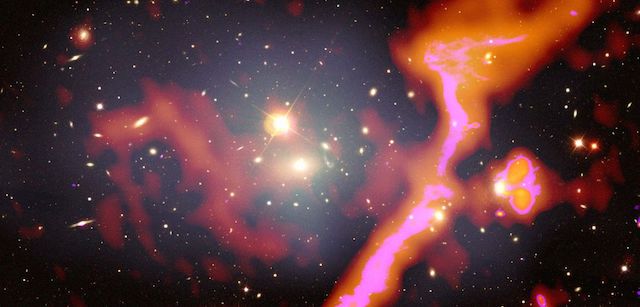
A new international study has discovered hundreds of thousands of previously unknown galaxies using Low Frequency Array (LOFAR) telescope.
The new research provides useful information for many research areas, including black hole research and galaxies evolution.
The team includes more than 200 astronomers from 18 countries. Part of them is from the University of Oxford.
Radio astronomy can show processes in the universe that people cannot see from optical telescopes.
One important equipment in radio astronomy is LOFAR. It is a large radio telescope network located mainly in the Netherlands.
It was completed in 2012 by ASTRON, the Netherlands Institute for Radio Astronomy and its international partners.
It is operated by ASTRON’s radio observatory, of the Netherlands Organisation for Scientific Research.
The European network of radio antennas spans seven countries and includes the UK station at STFC RAL Space’s Chilbolton Observatory in Hampshire.
LOFAR can map the sky in fine detail at meter wavelengths. It could offer a transformational increase in radio survey speed compared to existing radio telescopes.
It also opens up a poorly explored low-frequency region of the electromagnetic spectrum.
LOFAR can help scientists conduct wide and deep surveys to advance the understanding of the formation and evolution of galaxies.
In the present study, the researchers used LOFAR to conduct a radio sky survey.
They used an advanced mathematical method to analyze the enormous amounts of data.
The signals from all of the stations are combined to make the radio images.
The first part of the survey only processed data from the central stations located in the Netherlands.
LOFAR found a quarter of the northern hemisphere at low radio frequencies in the first part of the survey.
It maps three hundred thousand sources, and most of them are galaxies in the distant Universe.
With the information, researchers can find hidden black holes, study star formation in nearby galaxies, and understand what jets from black holes look like in the most distant galaxies.
They are also able to examine radio emission from the merge of galaxies.
The researchers are now re-processing the data with all of the international stations to provide resolution twenty times better.
They hope to make sensitive high-resolution images of the whole northern sky, and it will reveal 15 million radio sources in total.
The study lead author is Dr. Leah Morabito from the University of Oxford
You can find more about the LOFAR sky survey here.
Copyright © 2019 Knowridge Science Report. All rights reserved.



